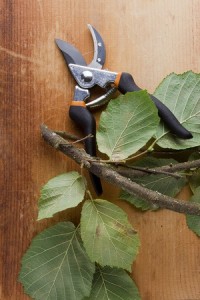
Just like a person gets a haircut, a tree can get one too, though in this case it’s called “pruning.”
A popular horticultural practice, pruning involves altering a tree’s form and growth so it looks and functions the way a person wants it to.
So, here’s the question: “Why prune a tree?”
Pruning offers many benefits, including the chance to positively affect a tree’s health. Pruning can include the removal of dead or dying branches or stubs. If a tree is injured by any number of things, from animals to storms, a good pruning can help restore and promote its overall health.
When people are used to a certain shape, pruning helps maintain that shape. If you use trees to block wind, noise and traffic from your sight and/or house, pruning can maintain a “dense hedge” size and shape at the right height and width for your intended purposes. Furthermore, pruning helps encourage fruit and/or flower development.
Should something not “look right” on a tree, such as the appearance of unwanted branches or suckers giving it an unattractive look, prune it. Oftentimes tree branches end up in places where people don’t want them– touching the roof/side of a home, for instance. Pruning can get rid of weak, narrow, or awkwardly angled tree branches, as well as protect people from the potential of falling limbs in areas where people tend to congregate.
Finally, for safety’s sake, you might want to prune a tree so that your yard isn’t too isolated from the public. Rather than give a small, undesirable critter a place to hide, you will be able to see exactly what is going on at your property.









Recent Comments